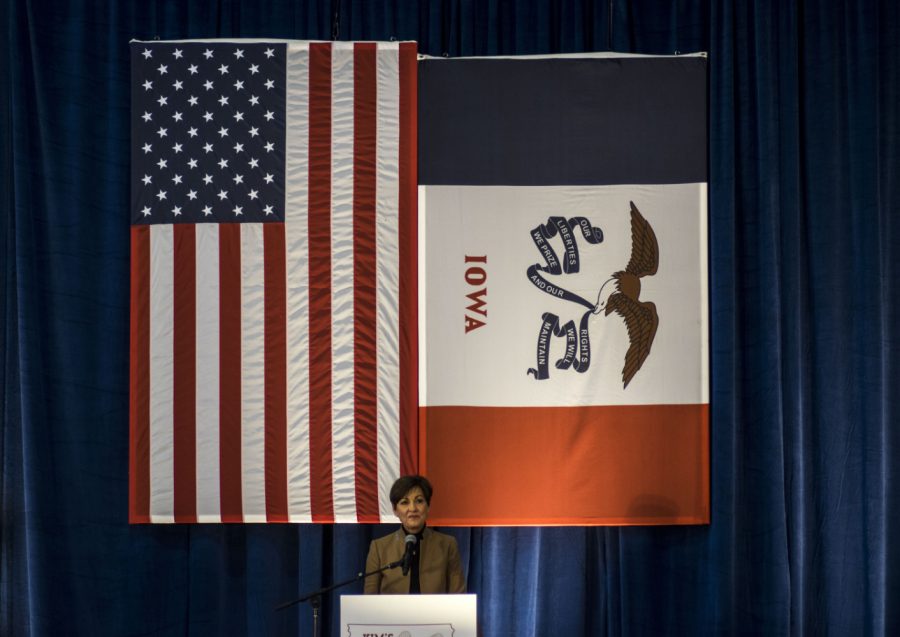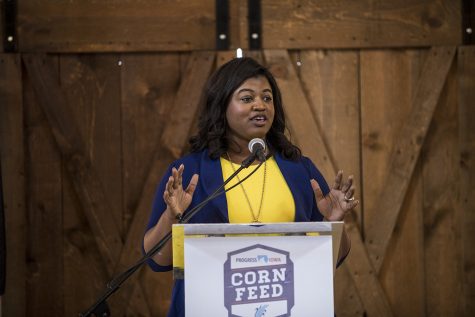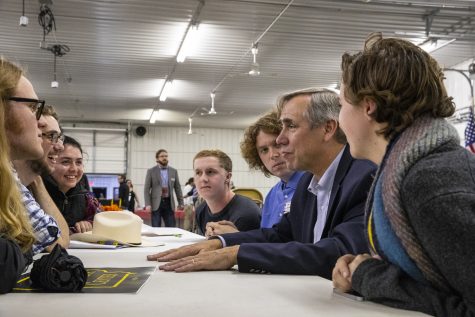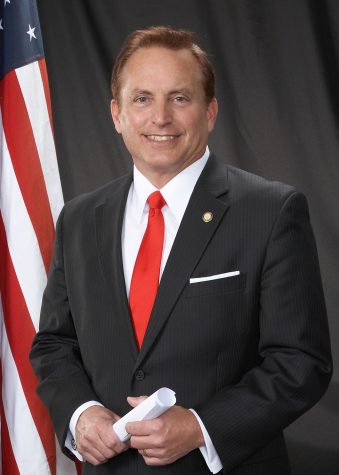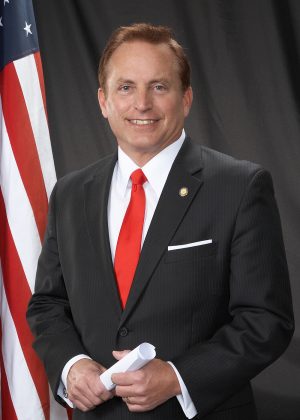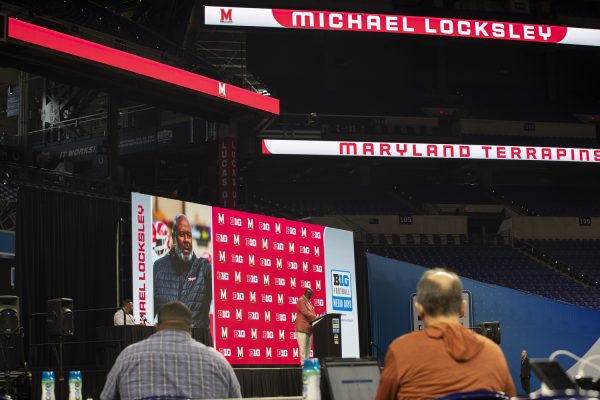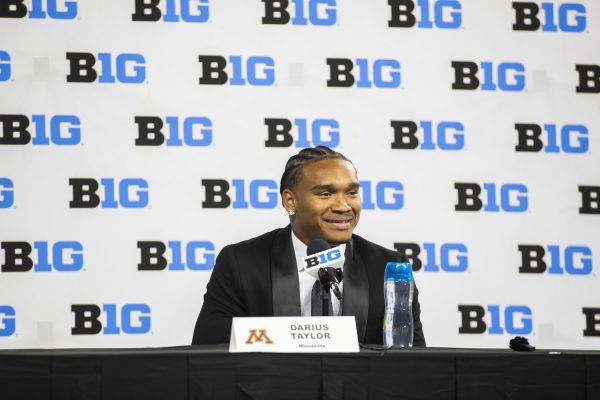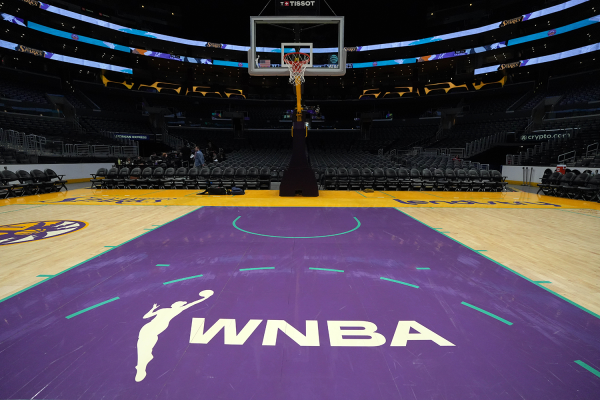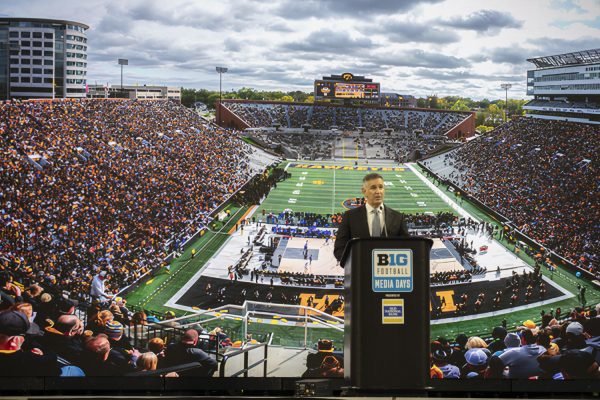State budget a debacle in gubernatorial race
With a bump in state revenue estimated for the next fiscal year, the Iowa economy has become a player in Iowa’s race for governor.
Kim Reynolds speaks at the Second Annual Harvest Festival on Saturday, October 13, 2018. Reynolds is running for a full term in the 2018 gubernatorial election. (Thomas A. Stewart/ Daily Iowan)
October 17, 2018
A government financial service on Tuesday estimated that the state’s revenue will grow in 2019 by 4.9 percent. That’s nearly 3 points higher than the actual revenue growth between 2017 and 2018. In 2020, however, growth is projected to slow to 1.7 percent.
Those estimates were provided by the state’s Revenue Estimating Conference. The group of three nonpartisan analysts met Tuesday to project the amount of money Iowa lawmakers will have to work with in the coming years.
The report comes as two gubernatorial candidates paint two different pictures of the state’s budget and provide differing ways to use the extra cash.
Since recent adjustments in the marking of state revenue, Gov. Kim Reynolds has touted reports that show a state budget surplus.
On the campaign trail and on social media, Reynolds, who is up for re-election in November, cites a Sept. 30 report from the Iowa Legislative Services Agency that said the state will have $127 million extra on hand.
The estimate is about $95 million more than a March projection that estimated Iowa’s budget would have a $31.7 million surplus.
“Here’s what is at stake in this election … Our budget is balanced, and we have a surplus of $127 million. This allows us to keep YOUR taxes low while still investing in the same priorities like K-12 education and health care,” Reynolds said in a tweet Tuesday morning.
It comes a few months after, for the second year in a row, the Iowa Legislature made midyear cuts totaling $35 million to government services (including the public universities) when the budget was expected to fall short of initial predictions.
Reynolds’ opponent, Democratic nominee Fred Hubbell, points to last year’s midyear budget shortfalls as a signal revenue may not keep pace with expectations.
“The revenue estimates released today show exactly what we already knew — the budget is out of control,” Hubbell said via an email from an aide. “This year, an unexpected surplus followed extreme midyear budget cuts, and the current tax plan could throw our state into the same chaos next fiscal year …”
RELATED: Iowa gubernatorial candidates spar over state budget, Medicaid
An Iowa poll in September said half of those surveyed responded that budget mismanagement is a problem attributed to Reynolds.
“We need to stop this yo-yo budgeting and create a strong, predictable budget so Iowans can effectively plan for their families, schools, and businesses for the long term,” Hubbell said.
Partially to thank for the bump in predicted additional revenue is the federal tax package Republicans passed in December 2017, a legislative analyst said.
A now-moot tax law in Iowa allowed residents to deduct federal taxes from their taxable state income. So, when Washington cut taxes, a see-saw effect required Iowa residents to pay more in state taxes.
Although the Legislature passed its own tax package in 2017 that eliminated the deduction, Jeff Robinson, a senior fiscal analyst for the Iowa Legislative Services Agency, said in a video memo released Sept. 20 that much of the increase in the state budget is due to the income-tax shift.
Growth, however, slowed in the final months of the fiscal year because of increased tax refunds from a tax cut Reynolds signed earlier in the year.
“FY 2018 produced good revenue growth for the entire fiscal year but ended on a slow note,” Robinson said.



